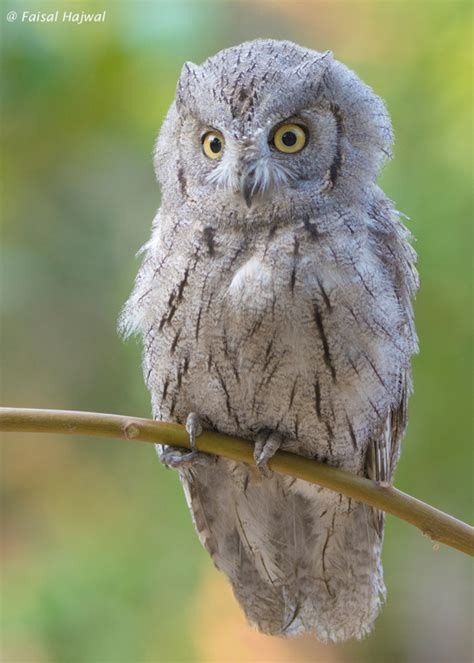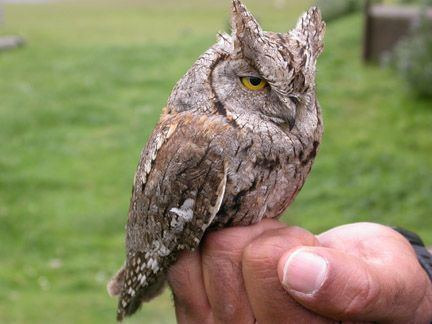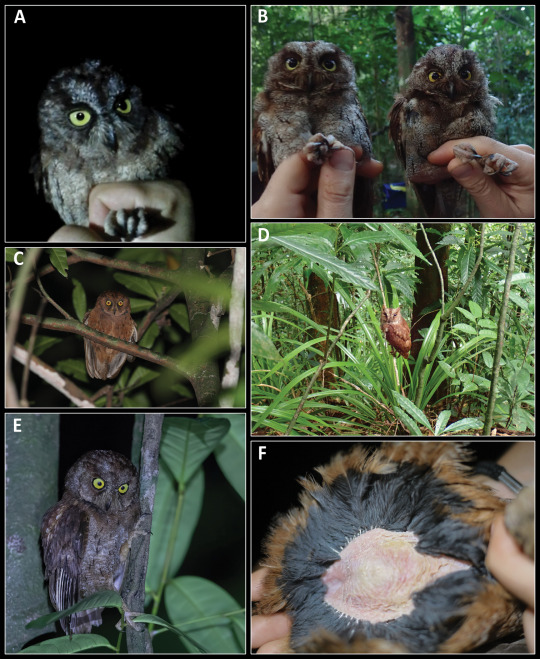#Eurasian Scops Owl
Text

The Least Horned Owl, Strix pulchella [Pl. 22] | The Naturalist's Miscellany v.1 | Biodiversity Heritage Library | Flickr
#george shaw#frederick polydore nodder#illustration#vintage illustration#scientific illustration#bird identification#strigidae#otus scops#eurasian scops owl
13 notes
·
View notes
Photo

Eurasian Scops Owl (Otus scops)
© Cliff Peterson
15 notes
·
View notes
Text
every night I hear the same bird outside my home and I just love the sound it makes - really simple, just one note, nothing fancy, but so peaceful and nostalgic (especially if you're walking alone at night).
I wanted to know it's name and after a lot of searching I finally found it - the Eurasian Scops Owl!
youtube
A literal cutie!
0 notes
Text
owls might eat people, boys

owlexander is, as much as i love him, suspicious as hell.
strixes are monsters in the Call of Cthulhu ttrpg-I can see guthrie pulling from the game as an extension of the Mythos that Malevolent so clearly exists within. also idk the legend just fits too well
#also it says malevolent on the wiki#malevolent#malevolent theory#cthulu mythos#malevolent shitpost#it can be both#owlexander#owls don’t eat people boys#baja’s blasting#undescribed#bonus points for eurasian scops for having yellow eyes
21 notes
·
View notes
Text
Battle Royale
SCREEEEEEEEEEEEEE (F-3)
These birds of prey don't really play nice with others, so we had to separate them out into their own battle.





#hipster bird battle royale#BR-F#black thighed falconet#cinereous vulture#pallid scops owl#eurasian sparrowhawk#black shouldered kite
36 notes
·
View notes
Photo

Eurasian Pygmy-Owl
Owls
Photographer: Ondrej Prosicky

Indian Scops Owl

Ural Owl

Cape Eagle-Owl
#ondrej prosicky#photographer#bird photography#nature#animal#eurasian pygmy-owl#owl#indian scops owl#Ural owl#cape eagle-owl
31 notes
·
View notes
Text

Eurasian ScopS Owl (Otus scops) on Sardinia, Italy by Sergio Luzzini & Luca Vignati on Instagram.
768 notes
·
View notes
Text

When owls find their way onto isolated islands lacking any terrestrial predators, they have a tendency to take up that role for themselves – evolving longer legs and shorter wings, and specializing more towards hunting on foot. From New Zealand to Hawaii to the Caribbean to the Mediterranean to Macaronesia, leggy island ground-owls have independently happened over and over again in the last few million years—
—And, unfortunately, they've all also become victims of the Holocene extinction, their fragile island ecosystems too easily disrupted by human activity and the arrival of invasive species.
The São Miguel scops owl (Otus frutuosoi) was found only in the Azores on São Miguel Island. About 18cm tall (~7"), it was slightly smaller than its relative the Eurasian scops owl, with longer legs, a wider body, and much shorter wings.
Its wing proportions indicate it would have been a poor flyer, instead primarily hunting on foot in the dense laurisilva forests. Since there were no terrestrial mammals or reptiles on São Miguel at the time, its diet probably mainly consisted of insects and other invertebrates – and it would have in turn been the potential prey of larger predatory birds like buzzards and long-eared owls.
All currently known subfossil remains of the São Miguel scops owl date only from the Holocene, between about 50 BCE and 125 CE. It's likely that it was extinct by the 1400s, following the settlement of humans in the Azores, destruction of its forest habitat, and the introduction of rodents, cats, and weasels.
———
NixIllustration.com | Tumblr | Twitter | Patreon
#science illustration#paleontology#paleoart#palaeoblr#são miguel scops owl#otus frutuosoi#strigidae#true owl#strigiformes#owl#bird#dinosaur#art#azores#convergent evolution#a superb owl
703 notes
·
View notes
Text
Here are five of the photos. They're all terrific photos, but these five pulled me in.

An Eastern Bluebird chases a Tree Swallow. Photo by Brad Imhoff / Macaulay Library.

Juvenile Eurasian Kestrels in their urban nest in Radešínek, Czech Republic. Photo by Lenka Steuter / Macaulay Library.

A Blue-headed Vireo in North Carolina has four hungry mouths to feed. Photo by Emilia Deino / Macaulay Library.

A Eurasian Scops-Owl disappears into tree bark in Israel. Photo by Liron Grau / Macaulay Library.

A Dunlin finds a perfect perch atop a Willet in California. Photo by Steven Hunter / Macaulay Library.
15 notes
·
View notes
Text

[https://www.inaturalist.org/observations/81468307]
Eurasian Scops Owl || Otus scops
Observed in Slovakia
Least Concern in location of observation
#ornithology#birds#owls#nature#wildlife#birds of prey#raptor#air beast#who cooks for queue? who cooks for queue all?
10 notes
·
View notes
Text
Washiowl and Kowlnoha.


Based on their names, Washio is a Eurasian Eagle-Owl, and Konoha is a Eurasian Scops Owl.

Eurasian Eagle-Owl Big

Eurasian Scops Owl Tiny tiny
80 notes
·
View notes
Text
Otus bikegila Melo et al., 2022 (new species)

(Individuals of Otus bikegila [F shows the brood patch of a female], from Melo et al., 2022)
Meaning of name: bikegila = for Bikegila [nickname of nature guide Ceciliano do Bom Jesus, who took part in fieldwork leading to the recognition of this species]
Suggested common name: Príncipe scops-owl
Age: Holocene (Meghalayan), extant
Where found: Old-growth lowland rainforests in Príncipe Obô Natural Park, Pagué, Príncipe Island
How much is known: A collected specimen (an adult female) is held at the Museu de História Natural e da Ciência da Universidade do Porto.
Notes: The islands of Príncipe and São Tomé in the Gulf of Guinea are home to many unique birds, with nearly 30 recognized species being found nowhere else on Earth. Local accounts of owls on Príncipe have been reported in scientific literature since 1928, but it wasn’t until 2016 that enough evidence was collected to confirm that a previously unrecognized species of owl was present on the island. A new paper gives this species a formal scientific name, Otus bikegila.
The genus Otus represents a group of small Afro-Eurasian owls known as the scops-owls, most of which have ear tufts. O. bikegila resembles the São Tomé scops owl (O. hartlaubi) in external appearance, but has longer wings and a very different call. Despite their similar appearance and close geographic proximity, genetic analyses indicate that O. bikegila and O. hartlaubi are not each other’s closest relatives, with O. hartlaubi instead being more closely related to the African scops-owl (O. senegalensis) and the Pemba scops-owl (O. pembaensis) of continental Africa.
Like many other scops-owls, O. bikegila comes in two different color morphs, a rufous morph and a gray-brown morph. It is known to call throughout the night, but rarely during the day (another way in which it differs from O. hartlaubi, which regularly calls during daytime). Interestingly, the call of O. bikegila is similar to that of the Sokoke scops owl (O. ireneae) from Kenya and Tanzania, even though the two are very distant relatives as scops-owls go.

(Illustration of the rufous [left] and gray-brown [right] morphs of Otus bikegila by Marco N. Correia, from Melo et al., 2022)
Reference: Melo, M., B. Freitas, P. Verbelen, S.R. da Costa, H. Pereira, J. Fuchs, G. Sangster, M.N. Correia, R.F. de Lima, and A. Crottini. 2022. A new species of scops-owl (Aves, Strigiformes, Strigidae, Otus) from Príncipe Island (Gulf of Guinea, Africa) and novel insights into the systematic affinities within Otus. ZooKeys 1126: 1–54. doi: 10.3897/zookeys.1126.87635
63 notes
·
View notes
Text

Eurasian Scops Owl (Otus scops) on Sardinia, Italy by Sergio Luzzini & Luca Vignati
43 notes
·
View notes
Photo

#Birdtober2022 Day 6 - Cavity Nester
It was meant to be an Eurasian Scops Owl, but I guess it could be pretty much any kind of Scops owl... 😂🦉
14 notes
·
View notes
Note
Question for Rin: sfw- I'm surprised that you also like owls. So what kind of owls do you like? Mine are Barn owls, Great Horned owls, and Snowy owls!
Rin - Typical harry potter fan aren't you?
Long-eared owl, Eostrix and Eurasian scops owl.
5 notes
·
View notes
Photo

بومة الأشجار الأوروبية أو الثبج الأوروبي الأسم الإنجليزي: European Scops Owl :Eurasian Scops Owl : Scops Owl الأسم العلمي: Otus scops هي بومة صغيرة الحجم,يتراوح طولها بين 19-21 سم, وطول جناحيها عندما تفردهما 47-54 سم, ويتراوح الوزن بين 65-135 غ. وتعتبر جزء من مجموعة أكبر تسمى البومة المخططة. وهي من النوع المهاجر. ونجده بلونين اما مائل الى البني او الى الرمادي بارع جدا في التخفي بسبب لونه الذي يندمج مع الاغصان والأوراق يفضل الاشجار الميتة اوالتي لا تتمتع بأوراق خضرا لسهولة اندماجه بها قد تمر بالقرب منها بمسافة لا تتجاوز المترين وتبقى جامدة لا تتحرك مستغله تمويهها الطبيعي, تبقى نائمة متخفية طوال ساعات النهار وتنشط بالليل بحثا عن الطعام كأغلب البوم, وهي من النوع الليلي بشكل كبير, اذ نادرا ما تشاهد في النهار تتغذى على الفرائس الصغيرة مثل الحشرات واللافقاريات الأخرى. تتواجد هذه البومة في الأماكن المفتوحة, كالحدائق, وفي الغابات, تضع هذه البومة 3-6 بيضات في فتحة في شجرة,تستطيع هذه البومة ان تنتصب, وتظهر خصلات الأذن الصغيرة (قرون من ريش صغير) ============ @boyahia ============ The European scops owl (Otus scops), also known as the Eurasian scops owl or just scops owl, is a small owl. This species is a part of the larger grouping of owls known as typical owls, Strigidae, which contains most species of owl. The other grouping is the barn owls, Tytonidae. This is a small owl, and at 19–21 cm (7.5–8.3 in) in length and a 47–54 cm (19–21 in) wingspan is not as large as the little owl. Body mass ranges from 64 to 135 g (2.3 to 4.8 oz).The scops owl perches upright and shows small ear tufts. It is predominantly grey-brown in colour, with paler face, underparts and shoulder line. This species has a strong direct flight on long narrow wings, reflecting its migratory habits. (at شاليهات الخويسات) https://www.instagram.com/p/ClRQTQuqPUk/?igshid=NGJjMDIxMWI=
0 notes